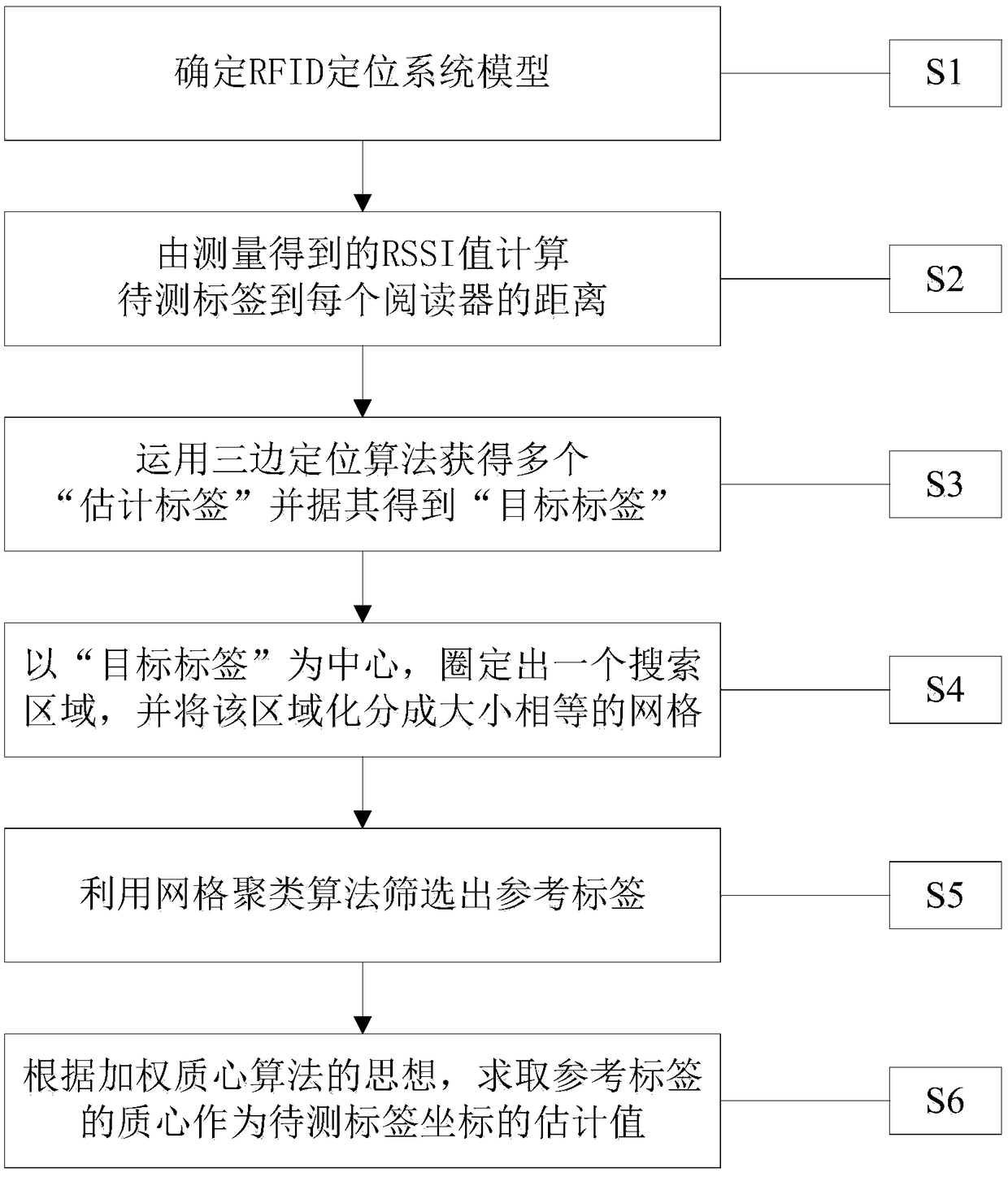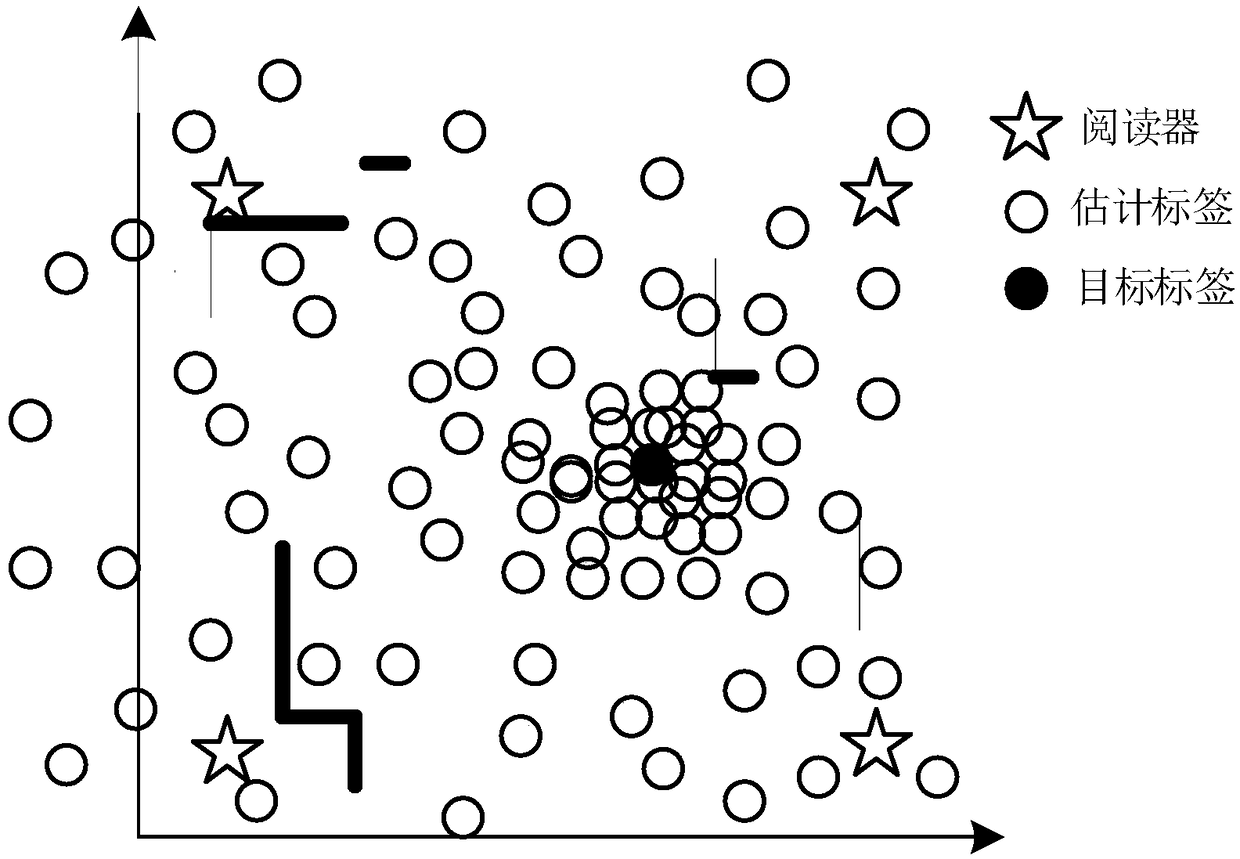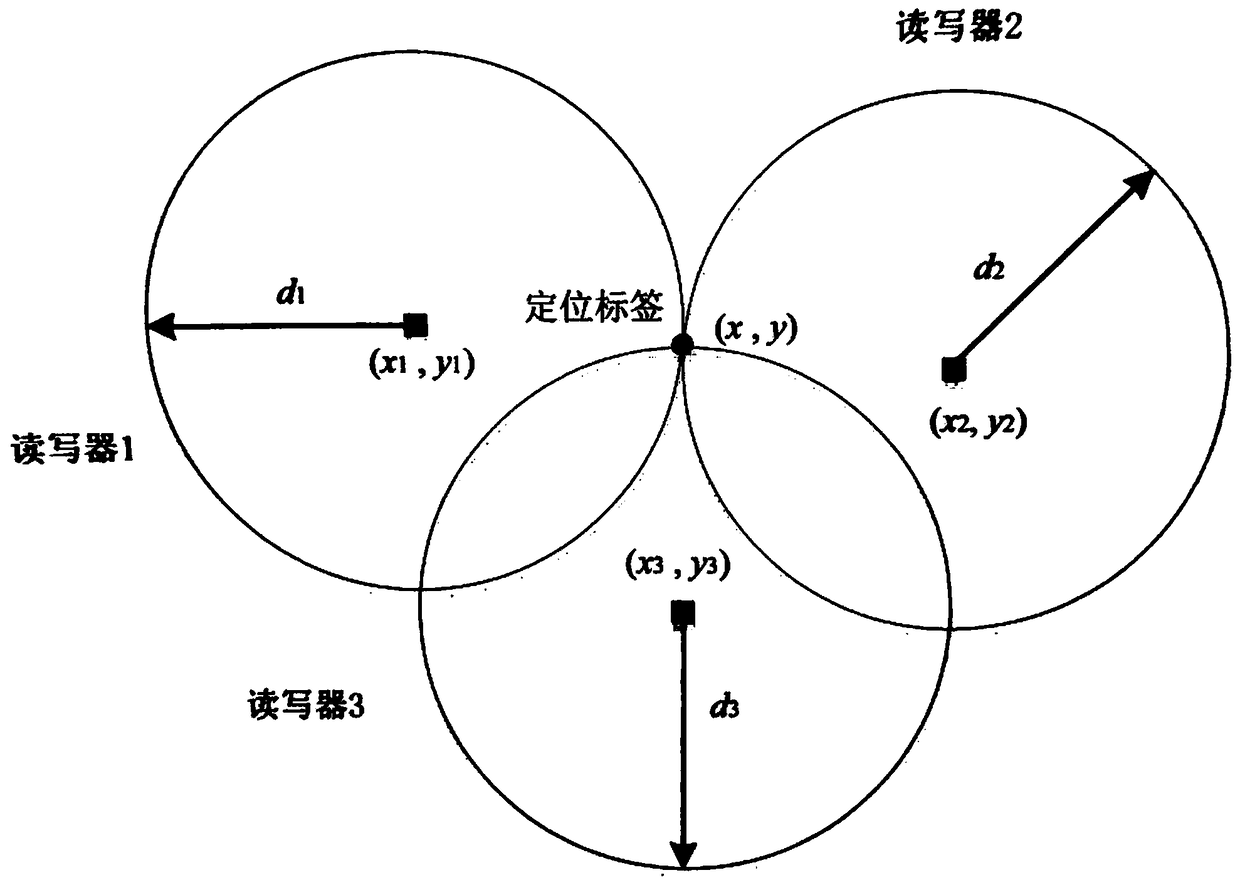Grid-clustering-based RSSI (Receive Signal Strength Indicator) indoor positioning algorithm
A grid clustering and indoor positioning technology, applied in the field of wireless communication and artificial intelligence positioning, can solve the problem of low positioning accuracy and achieve the effect of autonomous positioning
- Summary
- Abstract
- Description
- Claims
- Application Information
AI Technical Summary
Problems solved by technology
Method used
Image
Examples
Embodiment Construction
[0046] Embodiments of the present invention will be described in detail below in conjunction with the accompanying drawings.
[0047] figure 1 Shown is an RSSI indoor positioning algorithm based on grid clustering according to an embodiment of the present invention.
[0048] Such as figure 1 As shown, the RSSI indoor positioning algorithm based on grid clustering according to an embodiment of the present invention includes the following steps:
[0049] Step S1, place the RFID fixed reader, and randomly place the active tag as the tag to be tested, and determine the RFID positioning system model;
[0050] Step S2, measure the RSSI value from each reader to the tag to be tested multiple times at different times, record each measurement value and calculate the distance from the tag to be tested to each reader based on the obtained RSSI value;
[0051] Step S3, using the trilateration algorithm to obtain multiple "estimated labels", and calculating the average value of the coor...
PUM
 Login to View More
Login to View More Abstract
Description
Claims
Application Information
 Login to View More
Login to View More - R&D
- Intellectual Property
- Life Sciences
- Materials
- Tech Scout
- Unparalleled Data Quality
- Higher Quality Content
- 60% Fewer Hallucinations
Browse by: Latest US Patents, China's latest patents, Technical Efficacy Thesaurus, Application Domain, Technology Topic, Popular Technical Reports.
© 2025 PatSnap. All rights reserved.Legal|Privacy policy|Modern Slavery Act Transparency Statement|Sitemap|About US| Contact US: help@patsnap.com



